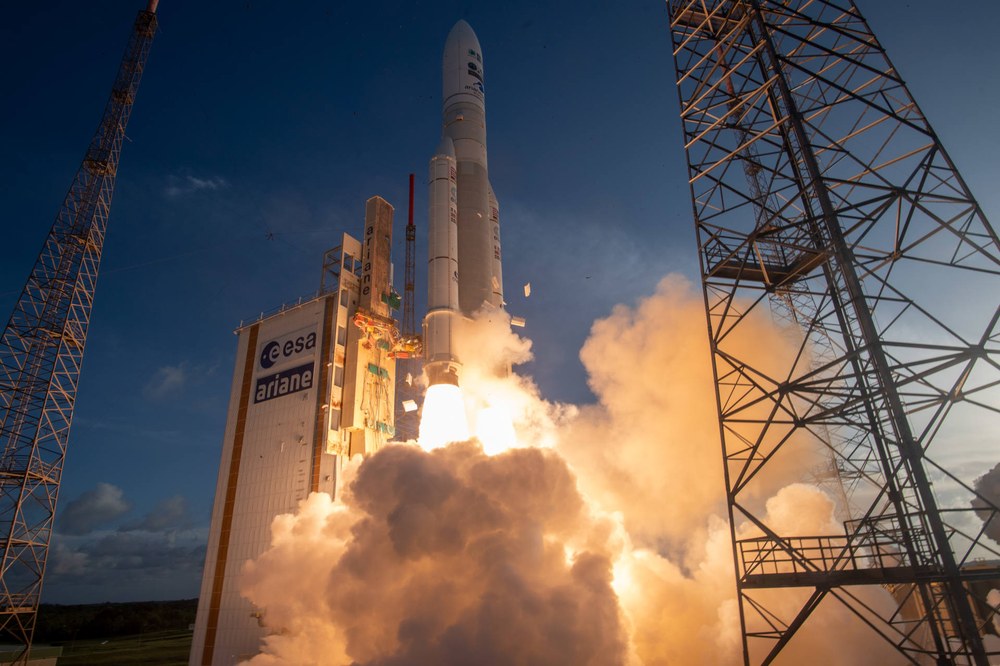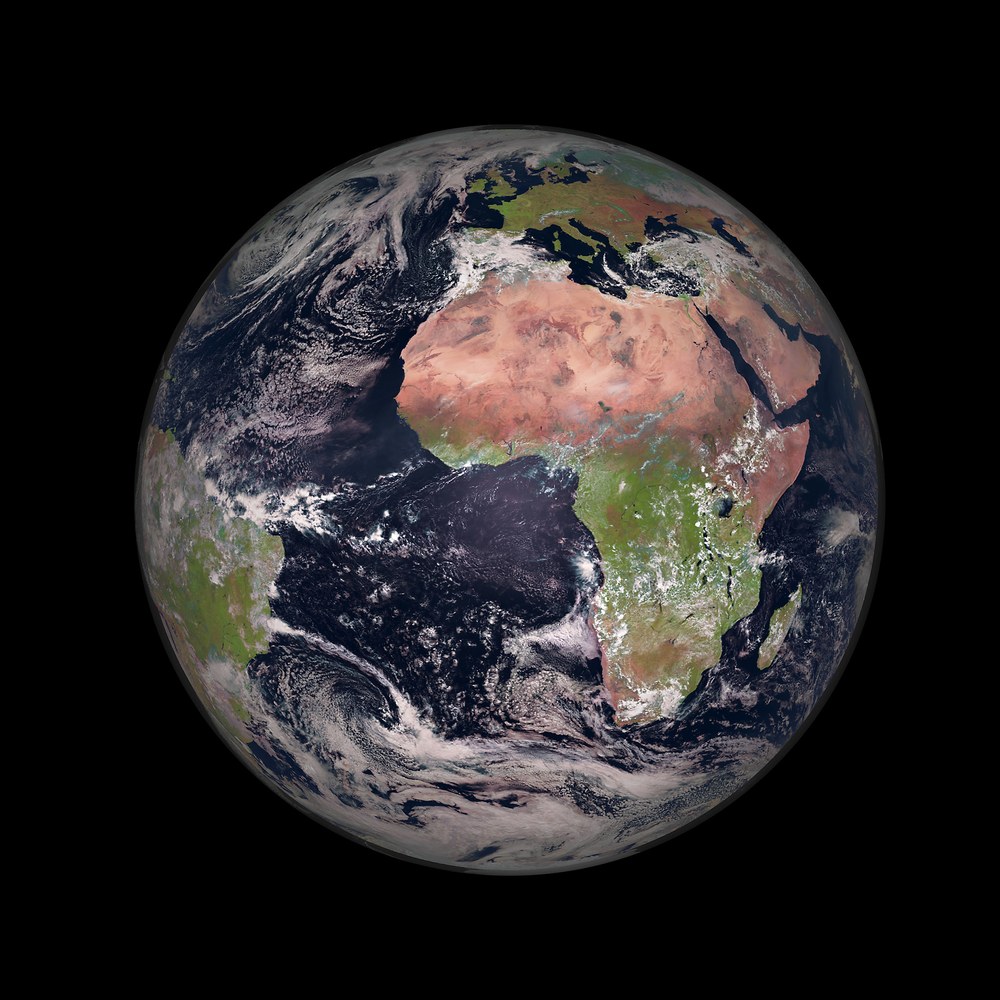MTG-I1 – Launching a new era of European weather observation



- The Meteosat Third Generation Imager-1 (MTG-I1) weather satellite launched into Space on 13 December 2022 at 21:30 CET on board an Ariane 5 launch vehicle from Europe’s Spaceport in French Guiana.
- This first satellite of the latest generation of geostationary weather satellites marks the beginning of a new era of weather observation for Europe.
- MTG-I1 delivers twice the temporal and spatial resolution and 100 times the data rate of previous generations. It can also accurately record lightning and thus regional thunderstorms.
- Focus: Space, weather forecasting
+++ UPDATE: On 13 December 2022 at 21:30 CET (17:30 local time in Kourou), the Ariane 5 launch vehicle with the weather satellite MTG-I1 (Meteosat Third Generation Imager-1) on board was successfully launched into space from Europe’s Spaceport in French Guiana. +++
The Meteosat Third Generation Imager-1 (MTG-I1) satellite marks the beginning of a new era of weather observation for Europe: the first satellite of the latest generation of geostationary weather satellites launched into space on 13 December 2022 at 21:30 CET on board an Ariane 5 launch vehicle from Europe's spaceport in French Guiana. Approximately 30 minutes after launch, the satellite was released into transfer orbit. During its 10-year mission, the satellite will continuously provide data on weather events such as solar irradiance, wind conditions and heavy rain events, making weather forecasts even more accurate.
Early detection of thunderstorms, fog and forest fires
"MTG-I1 will observe Europe and Africa from space – with twice the temporal and spatial resolution of its predecessors," explains Walther Pelzer, Member of the German Aerospace Center (Deutsches Zentrum für Luft- und Raumfahrt; DLR) Executive Board and Director General of the German Space Agency at DLR, based in Bonn. "The weather satellite will also be able to identify local storms and detect lightning. This will take weather forecasting a step further from large-scale forecasting to regional weather and storm forecasting." In addition to early detection of thunderstorms, the MTG-I1 data will also enable automatic fog and forest fire detection. This means that physical phenomena such as winds and lightning will be observed much more accurately, which will enable severe weather events to be predicted more reliably, for example.
"The primary instrument on MTG-I1 is the Flexible Combined Imager (FCI). It has 16 spectral channels and a resolution of 500 to 2000 metres, depending on the channel and operating mode," explains Thomas Ruwwe, MTG programme manager at the German Space Agency at DLR. The time for imaging the entire Earth disc is 10 minutes. In the ‘Rapidscan’ mode, Europe can be scanned in only 2.5 minutes with increased geometric resolution. This latest European weather satellite thus delivers double the temporal and spatial resolution and 100 times the data rate of previous generations.
Key German participation
- Germany has a share of approximately 30 percent in the development of the European MTG satellites. OHB is responsible for the construction of all six satellite platforms as well as for the InfraRed Sounder (IRS) instrument on the Meteosat Third Generation Sounder (MTG-S) satellites. The company Airbus DS is significantly involved in the development and construction of the Sentinel-4 instrument on the MTG-S satellites. The German Space Agency at DLR is responsible for technical support in the implementation of the MTG programme in cooperation with the German Weather Service (DWD), funded by the Federal Ministry for Digital and Transport (BMDV).
MTG-I1 becomes 'Meteosat-12'
Following launch, MTG-I1 entered its Launch and Early Operation Phase (LEOP). During this phase, the satellite reaches its target orbit, opens its solar arrays and switches on its communication systems. In the subsequent commissioning phase, the instruments are switched on, tested and calibrated in order to adapt the algorithms that will evaluate the acquired data. The operational phase of MTG-I1 will begin approximately one year after launch. During this phase, the data products that MTG-1I enables will be transmitted to all European weather services, including the German Weather Service, within a few minutes of being recorded. At this time, the satellite will be renamed 'Meteosat-12'.
The MTG series was developed by the European Space Agency (ESA) on behalf of the European Organisation for the Exploitation of Meteorological Satellites (EUMETSAT) and is intended to ensure the continuity of weather observation from space, which began in 1977 with Meteosat-1. MTG consists of a total of six satellites launched in series to routinely generate weather data for the next 25 years. There are two types of satellites: four satellites with imaging instruments called imagers (MTG-I1-4) and two satellites with spectroscopic instruments called sounders (MTG-S1-2). The primary instruments will provide new data for forecasting extreme weather events. The launch of MTG-S1 is planned for mid-2024.
